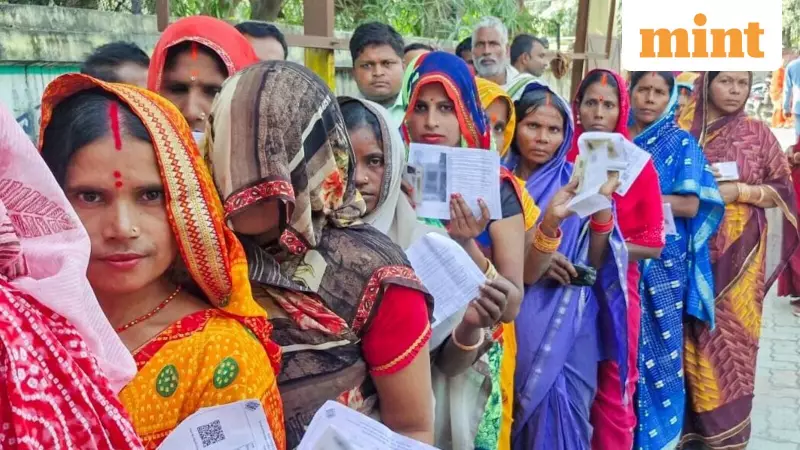
Indian states are confronting an escalating fiscal crisis as political parties ramp up welfare promises during election campaigns, pushing government finances to dangerous limits. The growing trend of populist schemes is reshaping state economies across the country, with capital expenditure taking a backseat while revenue sources remain stressed.
The Bihar Precedent: A Warning Signal
Bihar presents the most striking example of this worrying trend. Recent election campaigns featured welfare commitments including a ₹10,000 direct grant to women that could cost the state over ₹41,000 crore, according to estimates from Emkay Global. This staggering amount represents nearly 4% of Bihar's gross state domestic product (GSDP) and exceeds even the planned capital expenditure for the 2025-26 fiscal year.
The state's financial vulnerability is amplified by its heavy dependence on central transfers, with over 70% of revenue coming from New Delhi through tax devolution and grants. Paras Jasrai, associate director at India Ratings and Research, emphasized that this makes Bihar's finances inherently volatile, as any fluctuation in central support immediately strains fiscal stability.
Bihar's fiscal deficit in 2024-25 is estimated at 6% of GSDP, while the budget for 2025-26 targets 3% based on an ambitious 22% nominal economic growth projection. However, data until September reveals the fiscal deficit has already reached 7.8% of estimated GSDP, indicating the new government will begin its term with severely constrained fiscal space.
Election-Year Pressures Spread Across States
The fiscal strain visible in Bihar is repeating across multiple states that have conducted elections in recent years. Evidence suggests that welfare-linked spending creates chronic fiscal pressure rather than one-time costs, with deficits rising during election years and remaining elevated thereafter.
Chhattisgarh demonstrates one of the sharpest deteriorations, with its fiscal deficit skyrocketing from 1.0% of GSDP in the pre-election year (2022-23) to 5.3% during the election year. The deficit is estimated to have remained at this elevated level in 2024-25.
Maharashtra experienced a 40 basis points increase in fiscal deficit following the introduction of the Ladki Bahin scheme targeting women voters. Odisha saw an estimated 100 basis points rise, with its 2025-26 budget projecting the fiscal deficit-to-GSDP ratio above 3%, compared to just 1.7% in 2023-24.
The Emkay Global report notes that while the 15th Finance Commission set a 3% limit for state fiscal deficits in 2025-26, several states have already overshot this target. Consequently, the 3% ceiling could become the new floor for state deficits.
Structural Challenges Compound Election Pressures
Beyond election cycles, state finances face structural pressures from committed expenses including salaries, pensions, interest payments, and subsidies. A PRS Legislative Research report indicates that in 2023-24, states spent 62% of their revenues on such obligatory expenditures.
These fixed obligations cannot be easily scaled down, and when they consume such a substantial portion of revenue, development spending inevitably suffers. The squeeze is evident in headline numbers, with states recording a 0.4% revenue deficit in 2023-24, meaning they had to borrow simply to meet recurring expenses.
For 2025-26, states have estimated approximately 50% of revenue receipts will go toward these committed expenses, severely limiting space for capital expenditure that drives long-term growth. States' capital expenditure amounted to just 2.7% of GSDP in 2023-24.
Jasrai highlighted the compounding effect: "Consistent welfare expenditures cause debt to balloon, which further leads to increase in committed interest payments. States must boost capital expenditure, as a one-percentage-point increase in their own capex results in 80 bps of GDP growth."
Revenue Challenges and the GST Impact
The goods and services tax (GST) has failed to deliver the revenue boost initially anticipated. According to PRS Legislative Research, in the four years preceding GST implementation in 2017, states earned an average of 2.8% of GSDP from taxes later subsumed under GST. This dropped to 2.6% during the GST era.
The revenue gap has become more pronounced since states stopped receiving compensation for revenue shortfalls in mid-2022. While some north-eastern states have benefited from GST's destination-based structure, several larger states including Punjab, Chhattisgarh, Karnataka, Madhya Pradesh and Odisha have experienced clear declines in their tax-to-GSDP ratios compared to pre-GST years.
Capital Expenditure: The Growth Engine Stutters
While the Centre's capital spending has shown improvement, with ₹5.8 trillion recorded in April-September representing about 40% year-on-year growth, state-level capital investment typically delivers stronger growth multipliers by feeding directly into local infrastructure, procurement and employment.
A review of capital spending by 23 states for the first half of 2025-26 shows several large states have increased capital investment, with Punjab, Gujarat and Madhya Pradesh each seeing over 30% growth. However, progress remains slower than planned.
Several major state economies—including Maharashtra, Tamil Nadu, Uttar Pradesh, Karnataka and West Bengal—have recorded lower capital expenditure utilization compared to the same period last year. Jasrai noted that states typically proceed cautiously with capital spending in the first half as they cannot avoid revenue expenditure and prefer to assess revenue collection before committing to major investments.
With Tamil Nadu, Kerala and West Bengal heading to polls next year, the upward drift in fiscal deficits shows no signs of easing. Their recent fiscal deficits have hovered around the 3% mark, but Assam and West Bengal estimate their deficits to rise to 5.75% and 4.02% respectively in 2024-25, signaling continued fiscal stress across India's state economies.





